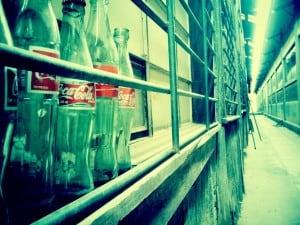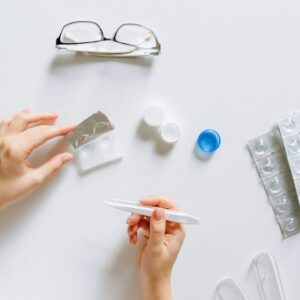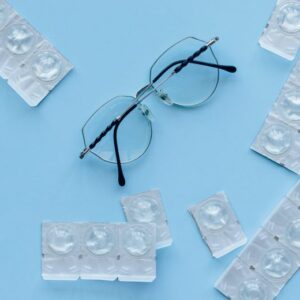
Have you ever wondered what exactly Coca-Cola is?
After 10 minutes
Ten tea spoons of sugar contained in a glass of Cola, cause devastating “strike” on the organism and the only cause, by reason of not vomiting, is the phosphoric acid which inhibits the action of sugar.
After 20 minutes
A leap of insulin levels in bloodstream occurs. The liver converts all the sugar into fat.
After 40 minutes
Ingestion of caffeine is finally completed. The eye pupils are expanding. Blood pressure rises, because the liver disposes more sugar into bloodstream. The adenosine receptors get blocked, thereby preventing drowsiness.
After 45 minutes
Body raises production of dopamine hormone, which stimulates the brain pleasure center. Heroin has the same principle of operation.
After 1 hour
Phosphoric acid binds calcium, magnesium and zinc in the gastrointestinal tract, which supercharges metabolism. Releasing of calcium through urine also rises.
After more than 1 hour
Diuretic effect of the drink enters in “the game”. The calcium, magnesium and zinc are removed out of the organism, which are a part of our bones, as well as sodium. At this time we have already become irritable or subdued. The whole quantity of water, contained in a Coca-Cola, is removed by the urine.
Actually, when having a cold bottle of Coke and enjoying its undeniable freshness, do we know what chemical “cocktail” we pour into our throats?
The active ingredient of Coca-Cola is orthophosphoric acid. Due to its high acidity, cisterns used for transporting of the concentrate have to be equipped with special reservoirs designed for highly corrosive materials.
Let’s have a look at “the anatomy” of one of the most advertised products of “Coca-Cola Co.” – Coca-Cola Light without caffeine. This drink contains Aqua Carbonated, E150D, E952, E951, E338, E330, Aromas, E211.
Aqua Carbonated – this is sparkling water. It stirs gastric secretion, increases the acidity of the gastric juice and provokes flatulency – plenty evolution of gases. Furthermore, spring water is not used, but is used regular filtered water.
E150D – food coloring, obtained through the processing of sugar at specified temperatures, with or without addition of chemical reagents. In the case with Coca-Cola, ammonium sulfate is added.
E952 – Sodium Cyclamate is a sugar substitute. Cyclamate is a synthetic chemical, has sweet taste, which is 200 times sweeter than sugar, and is used as an artificial sweetener. In 1969 it was banned by FDA, since it as well as saccharin and aspartame, caused cancer in rats’ urinary bladder. In 1975, prohibition seized also Japan, South Korea and Singapore. In 1979, WHO (World Health Organization), “who knows why?” rehabilitated cyclamates and recognizing them as safe.
E950 – Acesulfame Potassium. 200 times sweeter than sugar, containing methyl ether, where it aggravates the operation of the cardiovascular system. Likewise, it contains asparaginic acid which can also cause excitant effect on our nervous system and in time it can lead to addiction. Acesulfame is badly dissolved and is not recommended for use by children and pregnant women.
E951 – Aspartame. A sugar substitute for diabetics and is chemically unstable: at elevated temperature it breaks down into methanol and phenylalanine. Methanol is very dangerous: 5-10ml can cause destruction of the optic nerve and irreversible blindness. In warm soft drinks, aspartame transforms into formaldehyde which is very strong carcinogen. Some number of cases with aspartame poisoning include: unconsciousness, headaches, fatigue, dizziness, nausea, palpitation, weight gain, irritability, anxiety, memory loss, blurry vision, fainting, joint pains, depression, fertility, hearing loss and etc. Aspartame can also provoke the following diseases: brain tumors, MS (Multiple Sclerosis), epilepsy, Graves’ disease, chronic fatigue, Alzheimer’s, diabetes, mental deficiency and tuberculosis.
E338 – Orthophosphoric Acid. This can cause irritation of skin and eyes. It is used for production of phosphoric acid salts of ammonia, sodium, calcium, aluminum and also in organic synthesis for production of charcoal and film tapes, for production of refractory materials, ceramics, glass, fertilizers, synthetic detergents, medicine, metalworking, and textile and oil industries. Food orthophosphoric acid is used in the production of carbonated water and for preparation of ingredients in pastry. It is known that orthophosphoric acid interfere with the absorption of calcium and iron from the body, which can cause weakening of bones and osteoporosis. Other side effects are thirst and skin rashes.
E330 – Citric Acid. It is widely spread in nature and is used in pharmaceutical and food industries. Salts of citric acid (citrates) are used in food industry as acids, preservatives, stabilizers, and in medical fields – for preserving blood.
Aromas – unknown aromatic additives
E211 – Sodium Benzoate. It is used in production of some food products, as an anti-bacterial and anti-fungal agent. These products refer to jams, fruit juices and fruit yoghurts. It’s not recommended for use by asthmatics and people who are sensitive to aspirin. A study conducted by Peter Piper at the Sheffield University in Britain, found that this compound causes significant damage to DNA. According to his words, sodium benzoate which is an active component in preservatives doesn’t destroy DNA, but deactivating it. This can lead to cirrhosis and degenerative diseases like Parkinson’s disease.
So, what turns out? Well, it turns out that “the secret recipe” of Coca-cola is just one advertising play. What kind of secret may be there, when it’s well known to us that this is a weak solution of cocaine with preservatives, colorants, stabilizers and etc. I.e., this is legalized cocaine addiction plus pure poison. Diet Coke is even worse, because the aspartame in it, replaces sugar, becoming pure neurotoxic poison.
So, if you can’t imagine a life without Coca-Cola, take advantage of the following recommendations:
– Many distributors of Coca-Cola in U.S use this drink for cleaning their truck engines.
-Many police officers in U.S have bottles of Coca-Cola in their cars and when a car accident happens, they wash the blood out of the road with it.
– Coca-Cola is a great tool for removing rusty stains on chrome surfaces of cars. To remove corrosion from car battery, pour it with Coke and the corrosion will disappear.
– To unscrew a rusty screw, dip a cloth in Coca-Cola and wrap around it for several minutes.
– To clean stains from clothes – pour Coca-Cola on dirty clothes, add washing powder and run the washing machine as usual. You will be surprised of the results.
– In India, some farmers use Coca-Cola instead of pesticides for pest extermination, because it’s cheaper and the effect is completely satisfying.
So, Coca-Cola undeniably is a very useful product. The key is to be used for intended purposes, but not for drinking!
Here is a video about Coca-Cola!
Credits:


